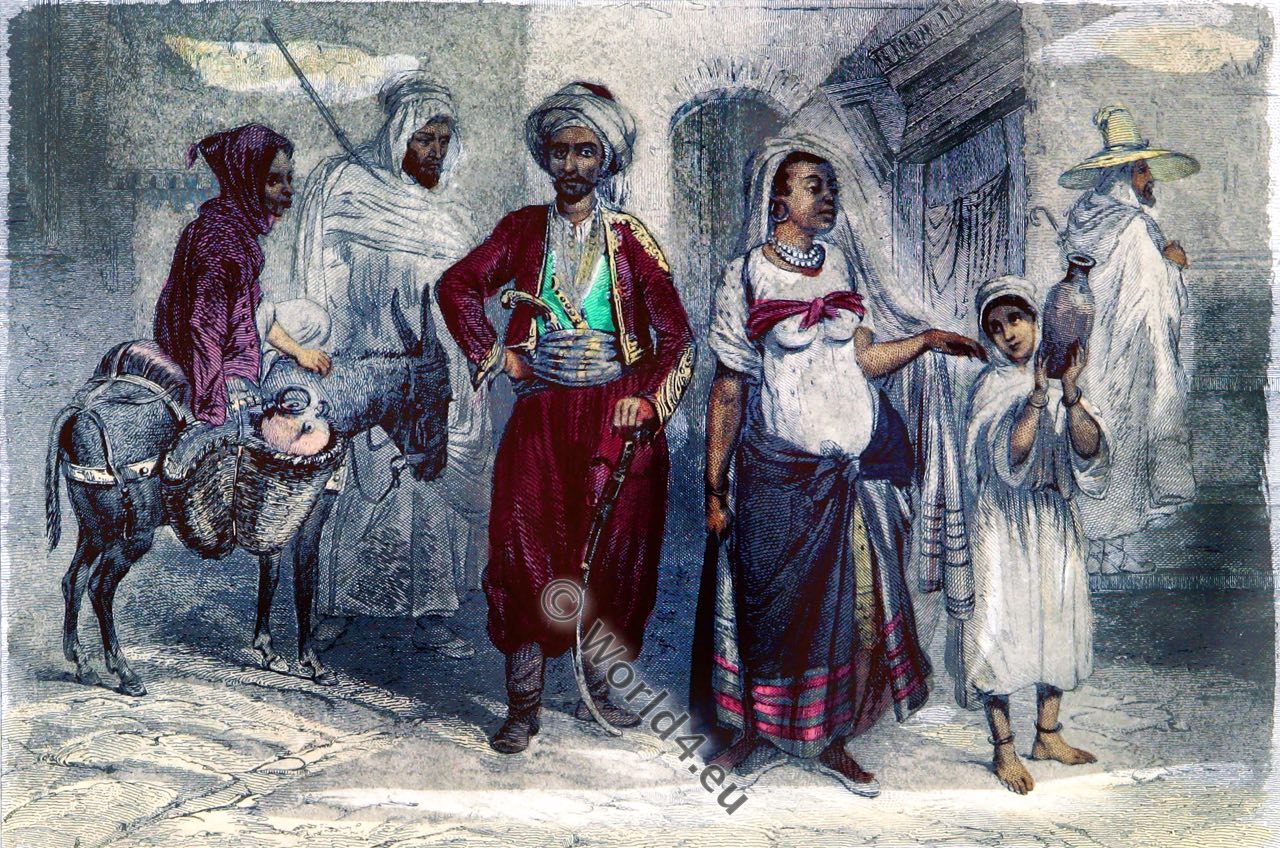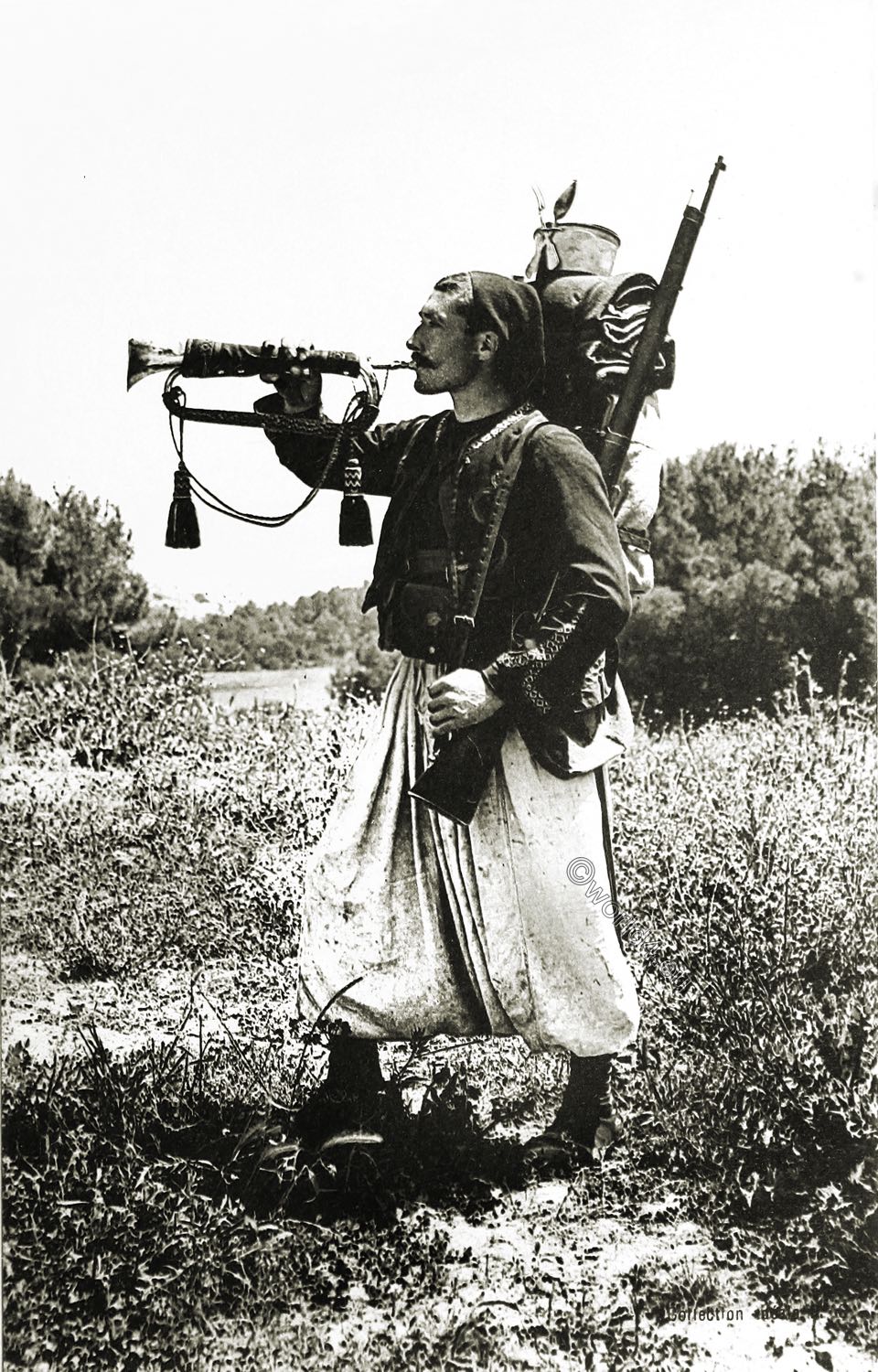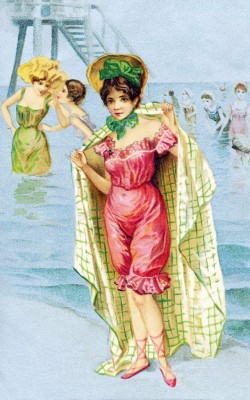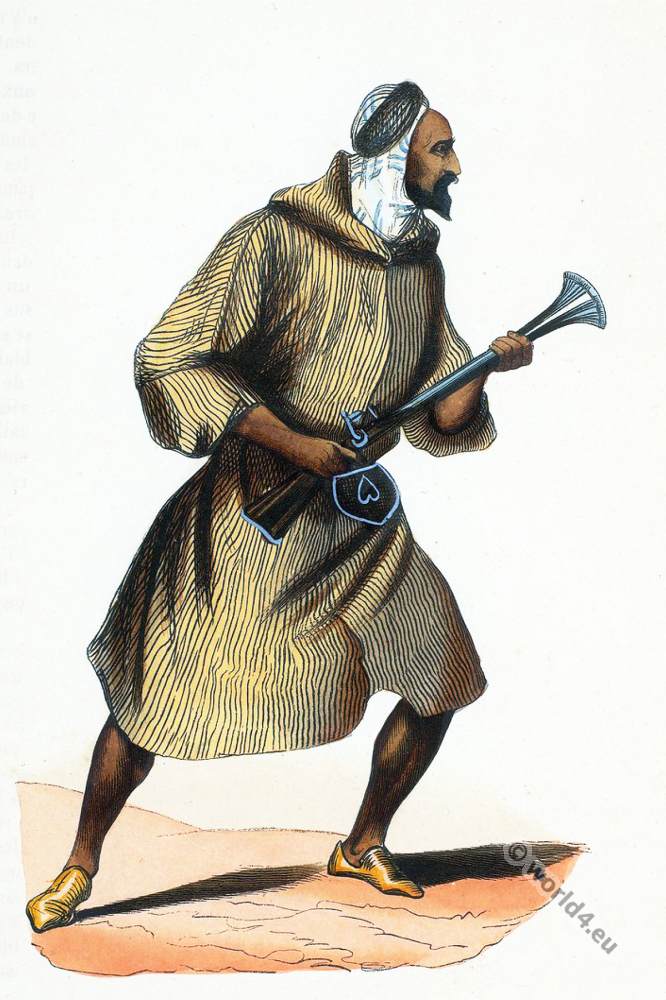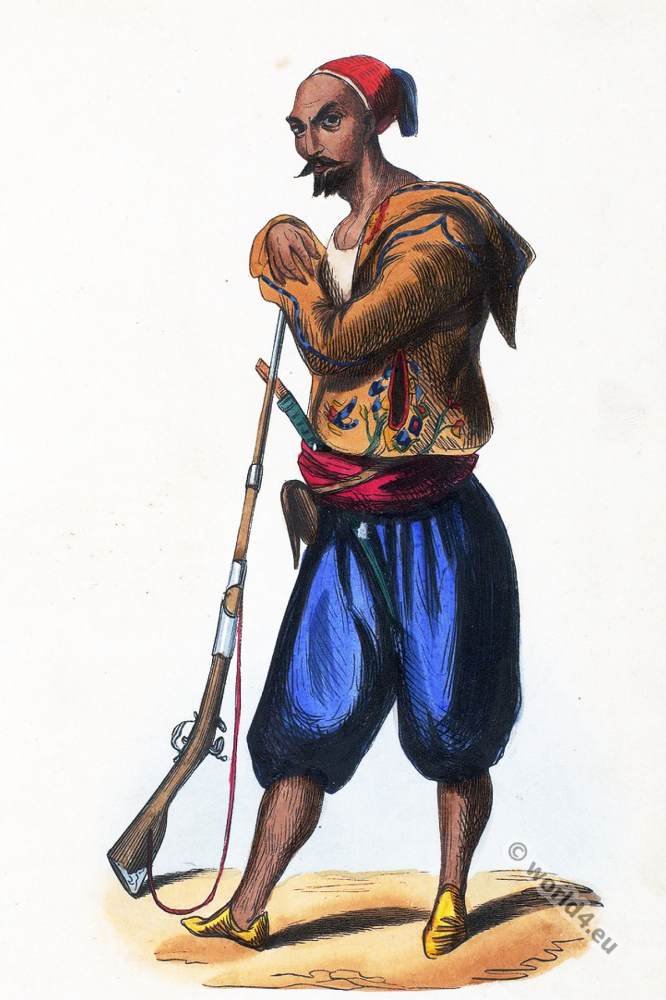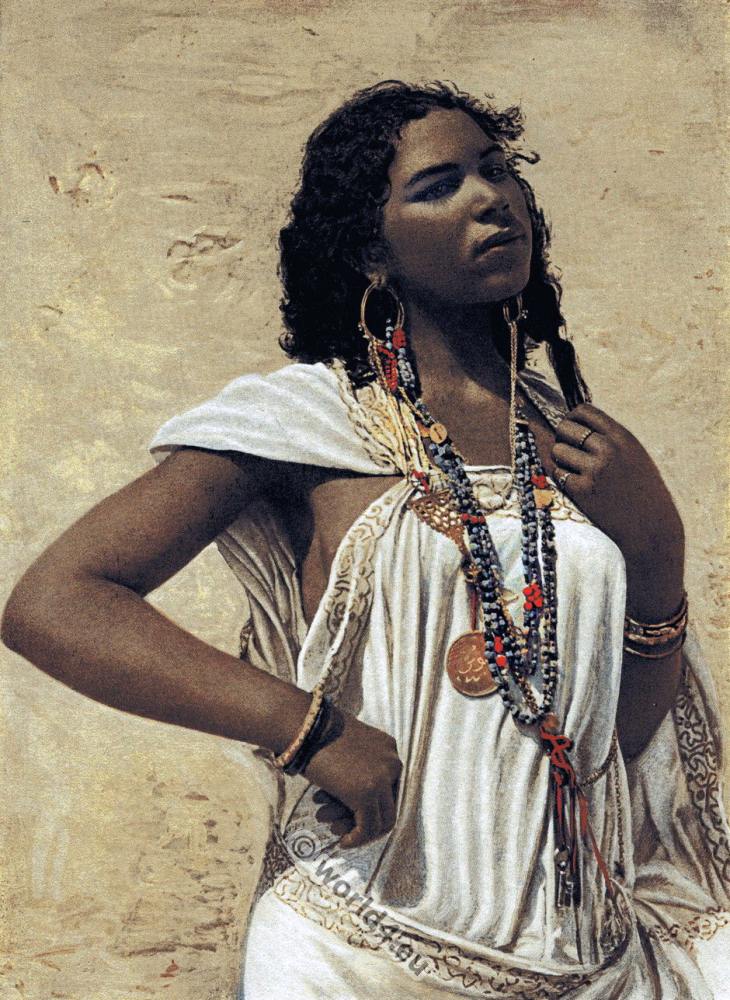
Photo: Jean Geiser (Jean Théophile Geiser, French photographer and publisher 1848-1923)
A Berber woman in traditional clothing and jewelry.
Source: Living Races of Mankind. A popular illustrated account of the customs, habits, pursuits, feasts, and ceremonies of the races of mankind throughout the world by Henry Neville Hutchinson (1856-1927), John Walter Gregory and Richard Lydekke. Published by Hutchinson & Co. Paternoster Row, London 1902.
Berbers are mainly found in present-day Morocco and Algeria, with isolated groups also in Tunisia and south of it in the Sahara. Their population figures today are difficult to determine, as the culture and language of the Berbers have been pushed back by mixing with the Arab population and the Arabisation measures of the post-colonial period. Today, numerous Berber tribes speak Maghrebi Arabic at least as a second colloquial language. Only a part of the Berbers speak exclusively Berber languages.
The Berbers are heterogeneous Afro-Asian-speaking ethnic groups descended from the historical populations of North Africa and populations of the Middle East. For many centuries, the Berbers inhabited the coast of North Africa from Egypt to the Atlantic Ocean.
Even before the conquest of North Africa by the Arabs, the Berber peoples were divided into three major groups:
- the Luwāta in the eastern Maghreb in the territories of Tripolitania, Cyrenaica, the Djarid and the Aurès mountains. They included the Hawwāra, the Aurīgh, the Nafzāwa and the Aurāba. The Hawwāra, who formed the largest group, in turn belonged to various subgroups. One of them was the Misrāta in Tripolitania, after whom the present-day city of Misrata is named.
- the Sanhajah in the central and western Maghreb. They included the Kutāma in Lesser Kabylia, the Zawāwa in Greater Kabylia, the Ghumāra in the Rif Mountains, the Masmuda on the Atlantic coast of Morocco, the Dschazūla in the High Atlas and the Lemta in southern Morocco.
- the Zanāta, who inhabited the Algerian coast between Kabylia and Cheliff, but also lived in various other places between Tripolitania and the western Maghreb.

Discover more from World4 Costume Culture History
Subscribe to get the latest posts sent to your email.

